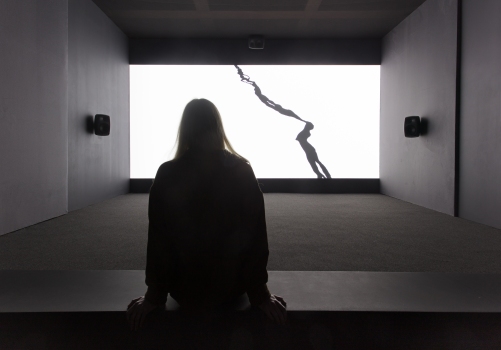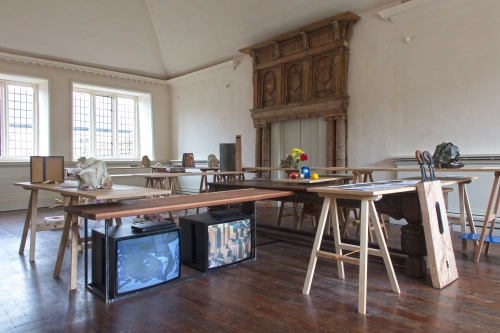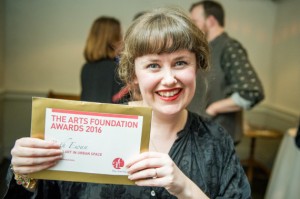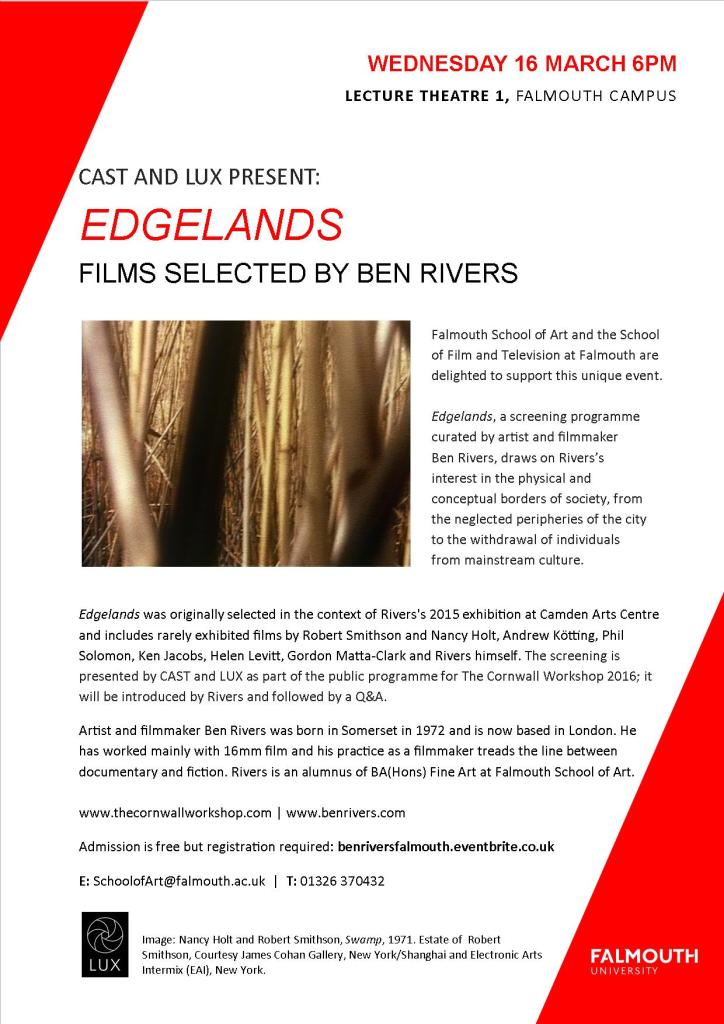Second year BA(Hons) Fine Art student Bianca Cocco was recently awarded a two-week internship supporting the opening of the Groundwork season of international art in Cornwall. Supported by funding through Arts Council England’s Ambition for Excellence scheme, Groundwork is organised by CAST (the Helston-based Cornubian Arts and Science Trust) in partnership with Kestle Barton, Newlyn Art Gallery & The Exchange and Tate St Ives.
Bianca reflects on her experience…
‘My 2-week placement at CAST as Groundwork intern allowed me many opportunities to gain insights in how multi-site exhibitions can be organised. Many staff members and volunteers were artists and students, so I made a few new acquaintances and the conversations were quite enlightening. It certainly broadened my horizons and I discovered a great deal about the local art community and gleaned insights into what could lie ahead after graduation.

Steve McQueen, ‘Gravesend’ (2007), presented for Groundwork at CAST in Helston. Image: Jamie Woodley © CAST (Cornubian Arts & Science Trust)

Christina Mackie, ‘The Judges II’ (2012-2018), presented for Groundwork in the King’s Room at National Trust Godolphin. Image: Jamie Woodley © CAST (Cornubian Arts & Science Trust)
My first day as intern involved some hosting for the resident artists at breakfast before they set off to install and talk about their work with staff and volunteers. That day was extremely busy and involved preparation and placement of roadside signage about the events around Helston and surrounding areas – it was important to ensure visitors were able to locate the various sites. There was also much to do at CAST as building works had just finished and the spaces needed clearing.
During the opening weekend I travelled to various locations such as Godolphin House, Goonhilly Earth Station and Kestle Barton, where my primary role was greeting and guiding guests to the exhibitions. The atmosphere was lively and positive – I really enjoyed myself and didn’t notice how long the day had been when it culminated in Andy Holden’s evening performance at AMATA at the Penryn campus.
Subsequent days involved invigilating the various exhibition spaces and works by Steve McQueen, Semiconductor, Simon Starling and Christina Mackie. Invigilation can give you a chance to spend prolonged time with artworks and it was particularly relevant for me as most were AV-based and this is my main area of interest. Christina Mackie’s work at Godolphin was rich and mysterious so I was grateful for the opportunity to study her work in detail and read press material relating to her installation.
Overall, I gained a deeper understanding of the effort involved in organising exhibitions and it enhanced my appreciation of the works and institutions involved. I would highly recommend pursuing work placements at some stage during study as it helps to ground you and offers realistic expectations of how life can unfold after graduation. My experience at CAST was invaluable to me and I’m grateful to have been able to contribute in some way to the success of Groundwork’s opening week’.
Groundwork Coordinator Josie Cockram commented, ‘Groundwork internships support people at the beginning of their careers to gain experience working alongside the team in the delivery of an ambitious programme of international art. We’ve been delighted to work with Falmouth University students working as interns and volunteers. Bianca was a big help during our opening weeks and we’re very pleased that she will stay on board as a volunteer invigilator as the programme continues’.
With an emphasis on moving image, sound and performance, the Groundwork programme of exhibitions and events in 2018 includes presentations of important new commissions and acclaimed works by internationally celebrated artists in venues and outdoor sites across West Cornwall. Volunteers are welcomed as the programme continues – to find out how to get involved, visit the volunteer section of the Groundwork website.














